What are all the different areas of a cat’s external anatomy called? Learn about the different parts of a cat’s body.
Head
The head of a cat has specialized structures to enhance the feline’s hearing, smell, vision, and movement.
Cat’s face diagram
Here are the main parts of a cat’s face.
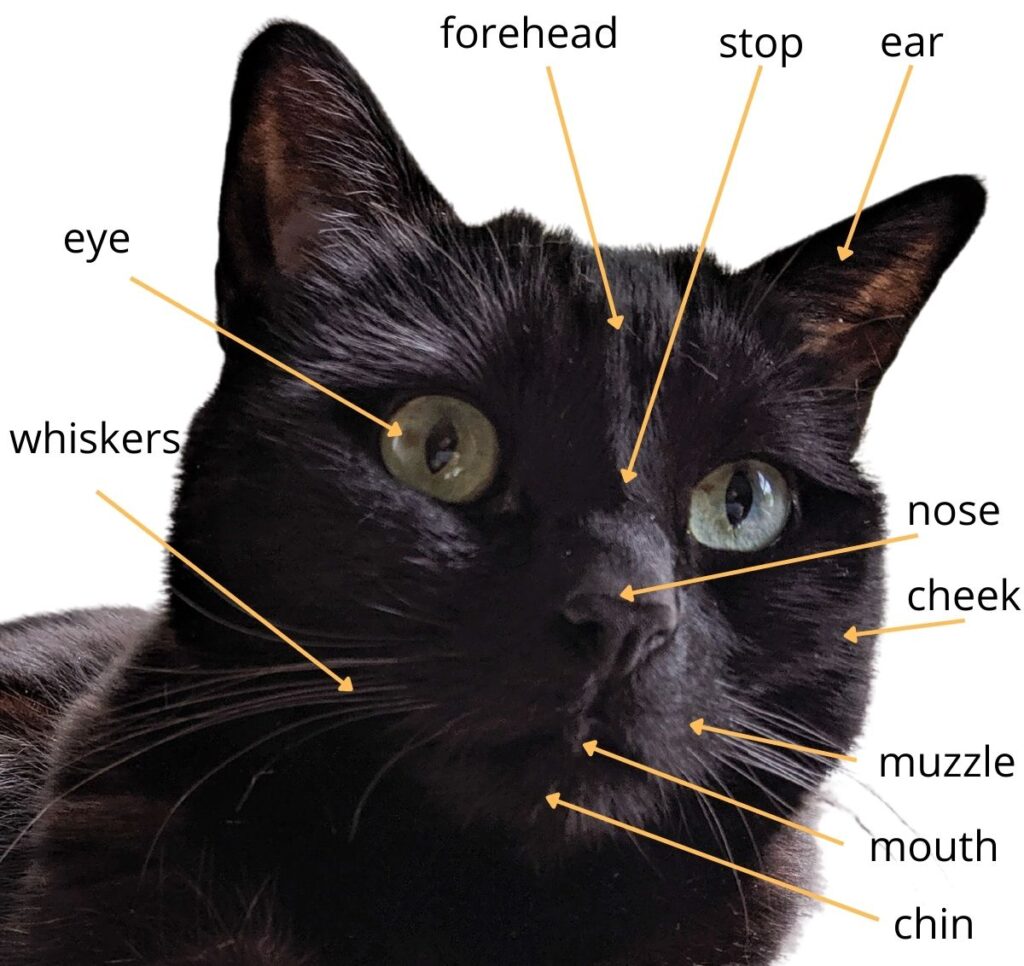
Whiskers
Most of a cat’s whiskers, also known as vibrissae, grow on the face. The cat’s muzzle, above the eye, and cheek all sprout whiskers. On each muzzle of most cats, there are four rows of 12 whiskers.
These highly sensitive, stiff hairs help cats to navigate through small spaces and to sense the location of prey near the cat. More: Where Do Cats Have Whiskers?

Cat eyes
Cats have very large eyes that are adapted to seeing in low-light conditions. As crepuscular animals, cats tend to hunt and are most active at dawn and at dusk where light lows are lower.
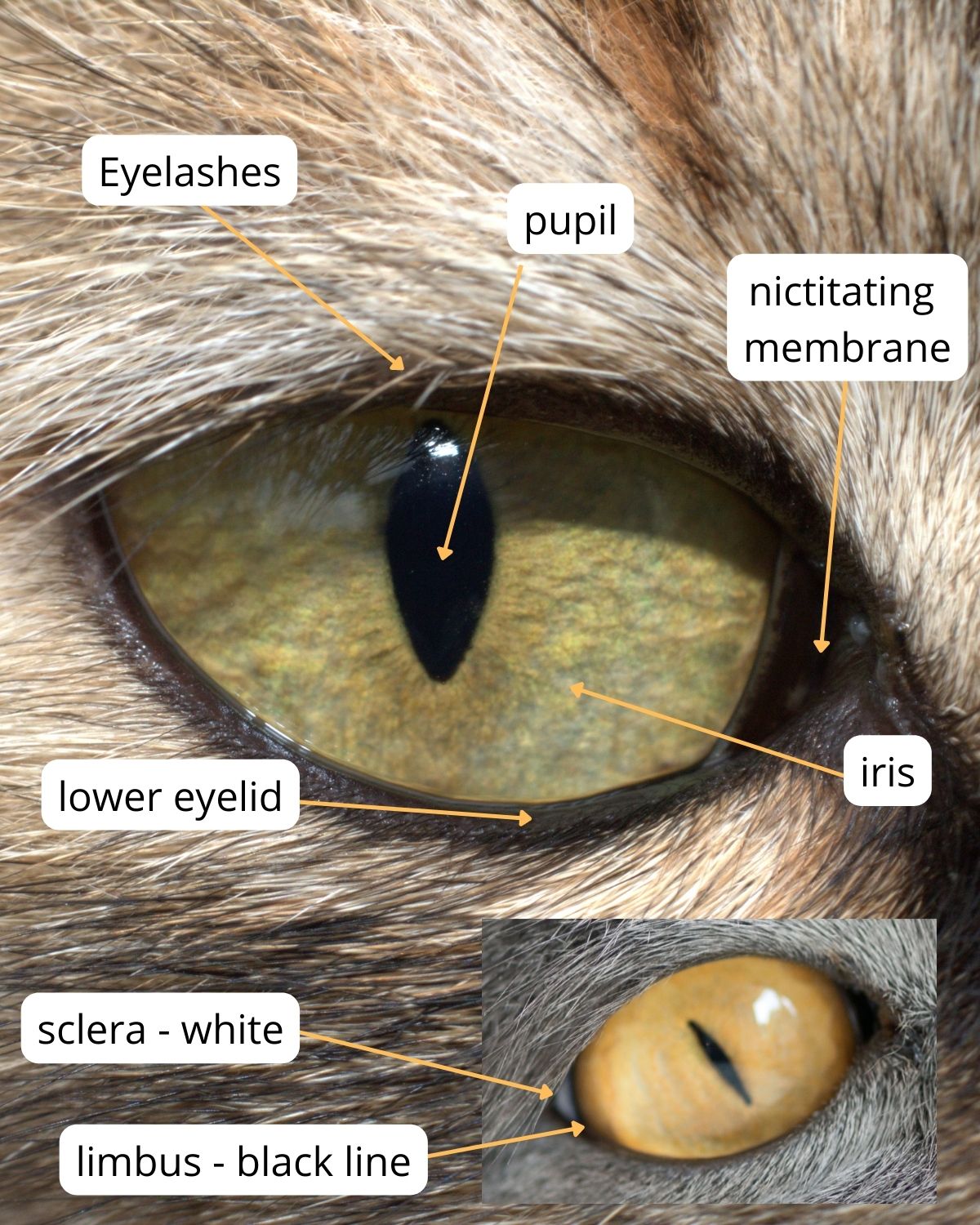
Pupils
A cat’s pupil will constrict or enlarged depending on the light conditions. In high levels of light, the pupil will become a vertical slit. In low light levels or when the cat is alarmed, the pupils will widen into a large circle.
Eyelashes
Eyelashes are a row of stiff hairs called cilia that line the upper and lower eyelids on a cat. On some cats, the cilia blend in with the rest of the soft fur that lines the cat’s eyes. Eyelashes are as long as the rest of the cat’s fur.
Nictitating membrane
Also known as the third eyelid, the nictitating membrane sits tucked away into the inner corners of the cat’s eyes.
The purpose of the nictitating membrane is to protect the cat’s cornea from debris and bacteria. On a healthy cat, the nictitating membrane is hard to see when the cat is awake. The membrane also helps to lubricate the eyes.
The best time to spot the nictitating membrane is when a cat is first waking up and it hasn’t retreated back into the corner of the eyes.
Cat Ears
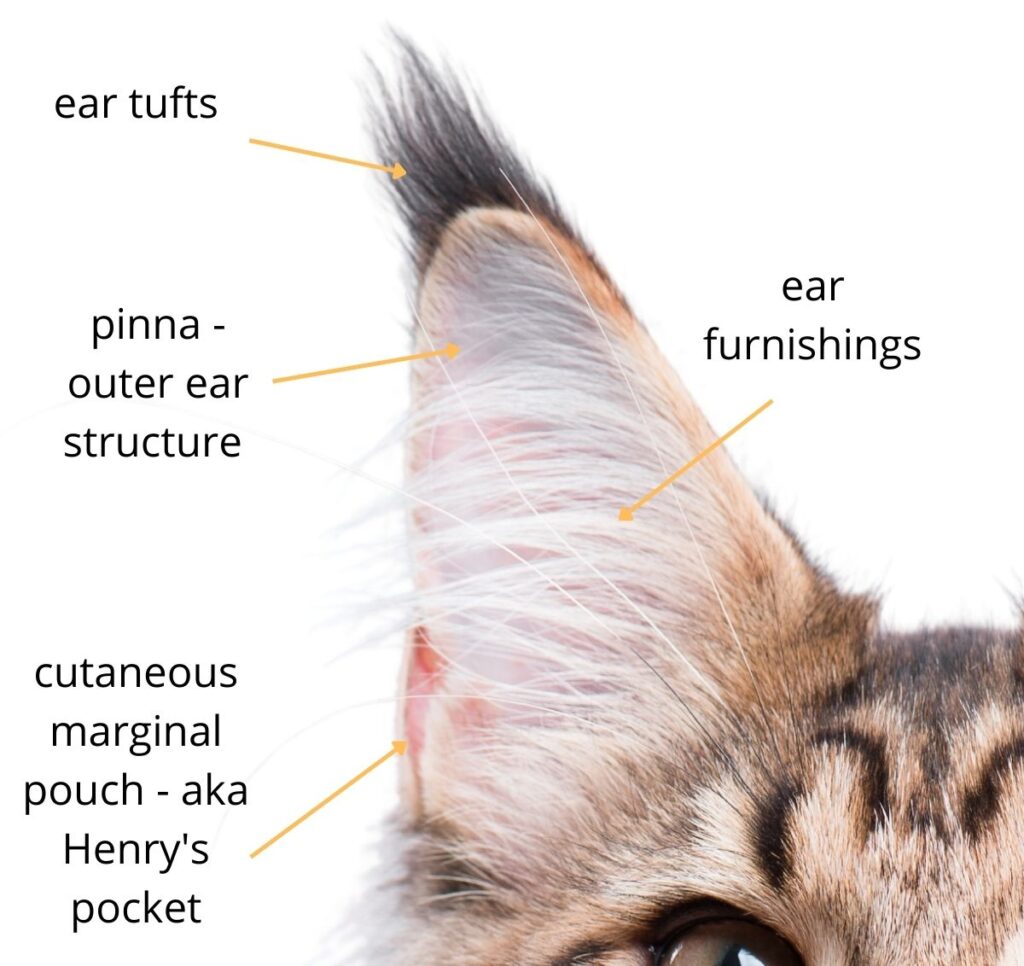
The shape and features of a cat’s external ears have evolved to help enhance the cat’s hearing. The feline ear has 30 sets of muscles that are used by the cat to rotate the ear up to 180 degrees in any direction. Humans need to move their entire head towards a sound while a cat can move just one ear or both.
Cat pinnae
The pinnae (pinna for just one) are the external ear flaps and the shape of these structures helps to amplify sound. Most cats have ears that are straight up although breeds like the Scottish Folds have a genetic mutation that results in folded ear flaps.
An interesting fact is that researchers found that the temperature of the right ear (and not the left ear) can be a measurement of the stress levels of a cat.
Henry’s pocket
At the lower outside ends of the pinnae are folded structures called cutaneous marginal pouch or Henry’s pocket. Researchers aren’t sure what the exact function of these structures is – one hypothesis is that the cutaneous marginal pouch helps in the detection of high-pitched sounds by attenuating lower pitches. Most prey that a cat hunts emits high frequency sounds which the Henry’s pocket may help to filter for.
Ear fur in cats
The wisps of fur found just inside the pinnae are called the ear furnishing. These hairs help to capture vibrations from sounds to enhance the cat’s hearing.
Some cat breeds have prominent fur that extends from the tips of the ears called ear tufts. Ear tufts are also known as lynx tips and are rare on short-haired cats.
The ear tufts also help to funnel sounds down into the cat’s ear and to keep debris out.
Cat’s nose and mouth

The ability to smell is thought to be fourteen times more sensitive in cats than in humans.
Rhinarium
One place that cat’s lack fur is the rhinarium, also referred to as the nose leather.
Cat pheromones and their face
Cats have pheromones from glands in their cheeks and chin. These glands spread the cat’s scent anytime they rub their cheeks or chin on another animal, person, or object. This is the cat’s way of saying, “you belong to me.”
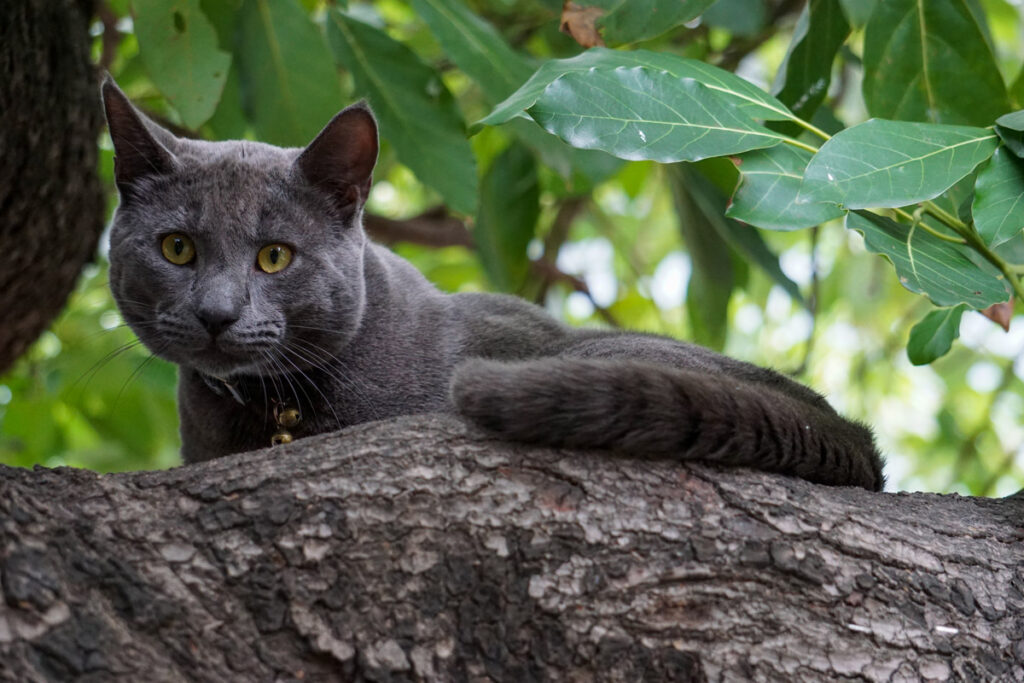
When an intact male cat sexually develops, their cheeks will thicken due to testosterone which is a hormone. These fleshy pads give tom cats widen facial features in the cheek area.
Back of a cat’s head
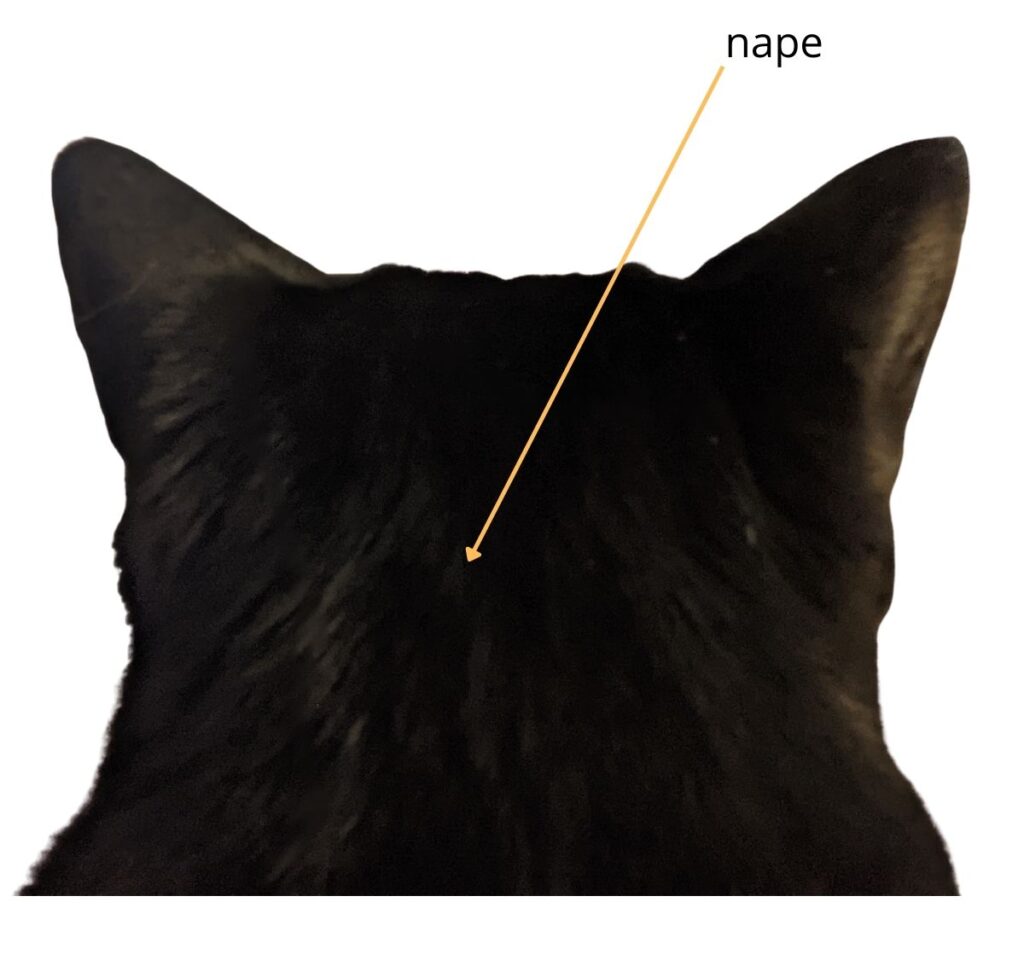
The back of a cat’s neck is called the nape. The nape is also known in medical terms as the nucha. The nape contains loose skin known as the scruff. This non-sensitive area of skin is used by the mother cat to carry her kittens using her teeth.
The act of grabbing the scruff immobilizes the kitten so it doesn’t wiggle or squirm while the mother is transporting her offspring.
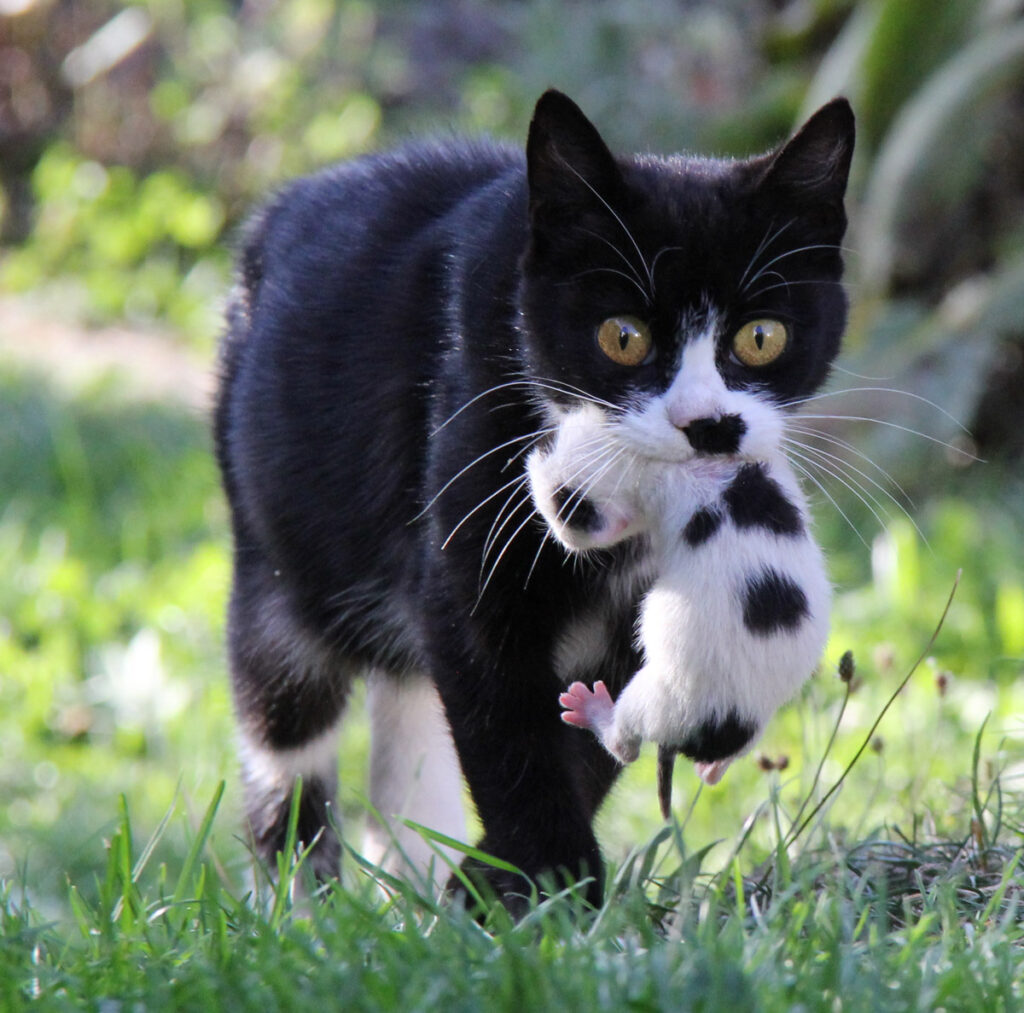
Body parts of a cat
The hock is equivalent to a human’s ankle joint.
Cat’s walk on their toes which means they are digitigrade. Walking on their toes allows cats to move faster and quieter.
The withers on a cat is the highest point of the shoulder blades. The loose skin in this area is often where a vet will grab to inject medicine or vaccines into a cat.

The tail helps the cat to balance.
Primordial pouch
The primordial pouch is loose skin that protects a cat’s belly and vital organs during a fight. Researchers also believe the the primordial pouch helps a cat to extend the power of its jump.
Cat paws
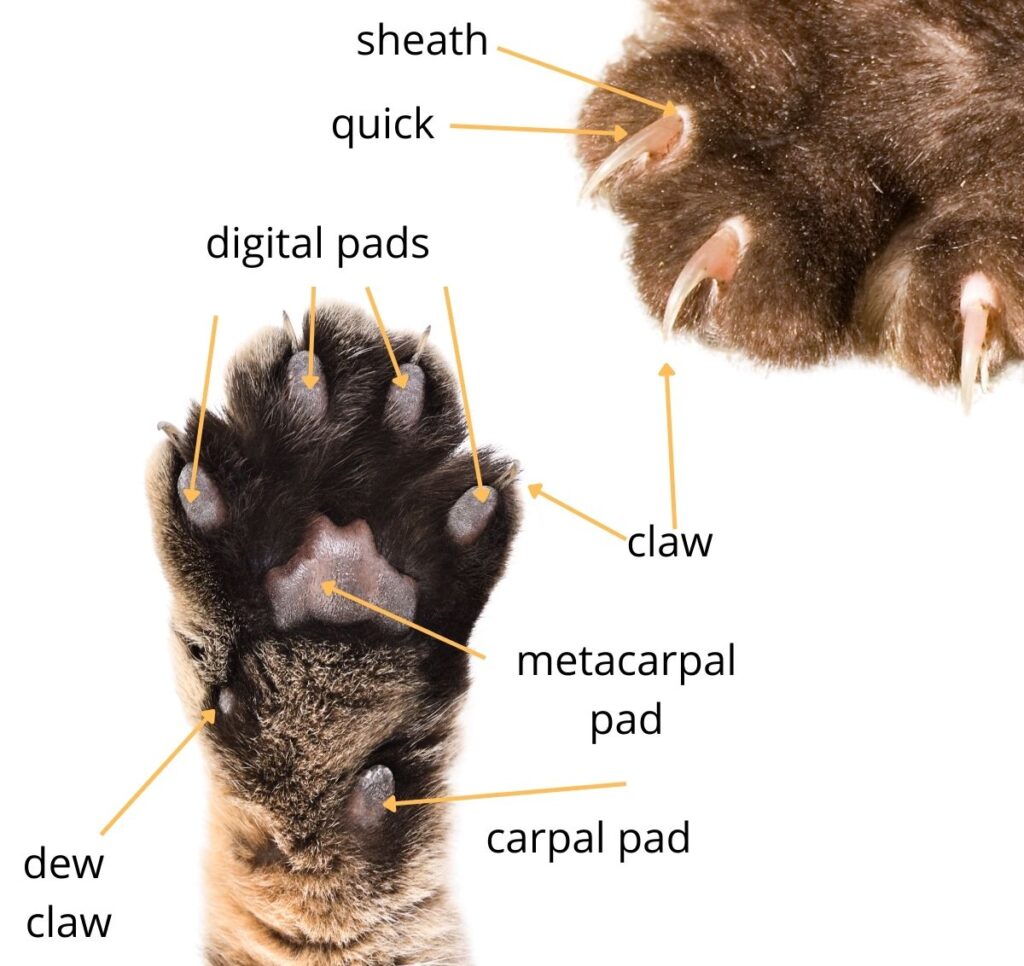
The toes and claws of a cat are know collectively as the cat paw.
How many claws does a cat have?
The majority of cats have 18 digits and claws: five on each forelimb—the dewclaw is the fifth digit—and four on each hindleg. Cats with more than 18 digits are called polydactyl.
References
How well do cats hear? (2021, October 11). FirstVet. https://firstvet.com/us/articles/how-well-do-cats-hear
What’s with that slit on your cat’s ear, and more on feline anatomy. (2017, May). Ann Arbor Animal Hospital. https://annarboranimalhospital.com/2017/05/whats-slit-cats-ear-anatomy/
Mazzotti, G. A., & Boere, V. (2009). The right ear but not the left ear temperature is related to stress-induced cortisolaemia in the domestic cat (Felis catus). Laterality, 14(2), 196-204. DOI: 10.1080/13576500802344420






